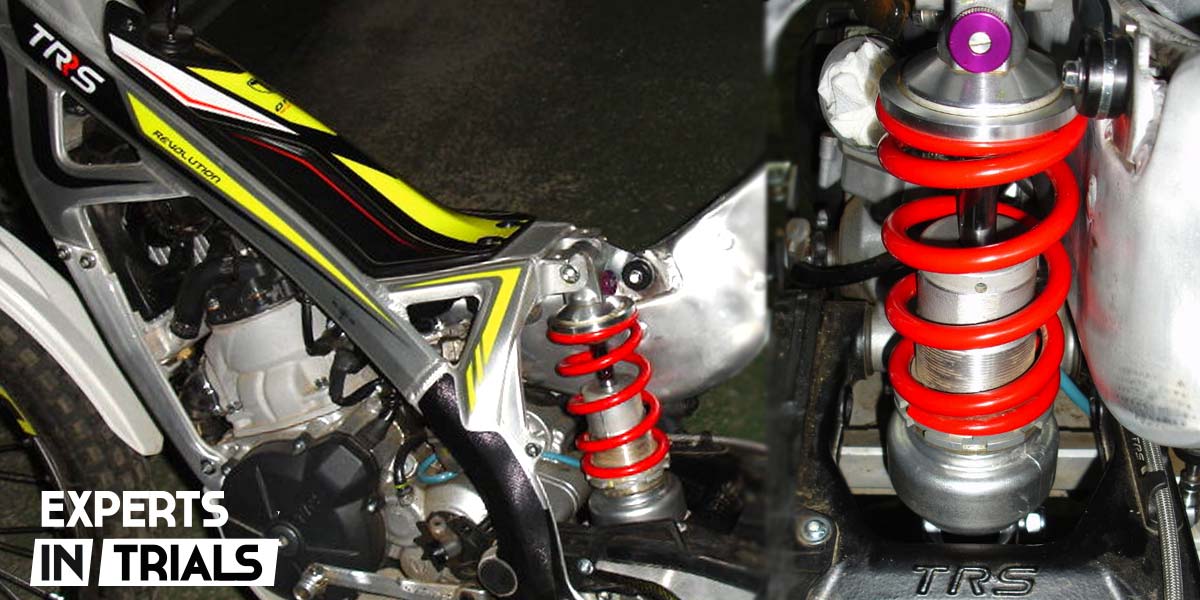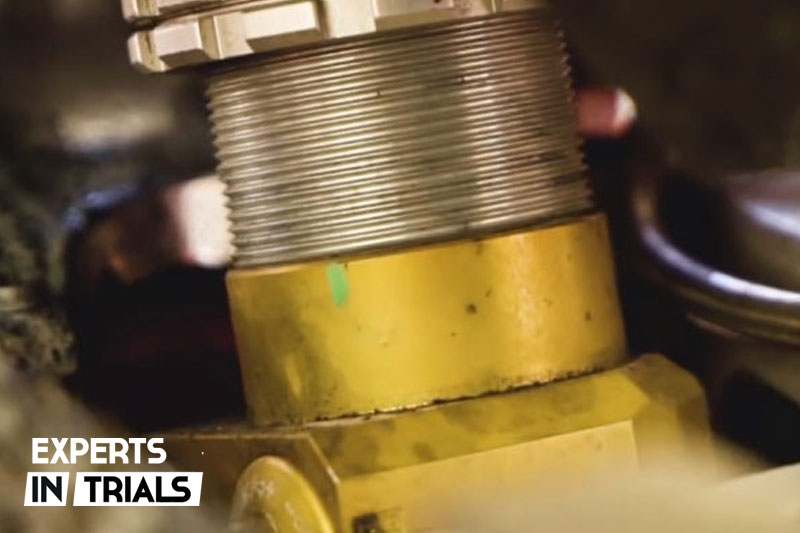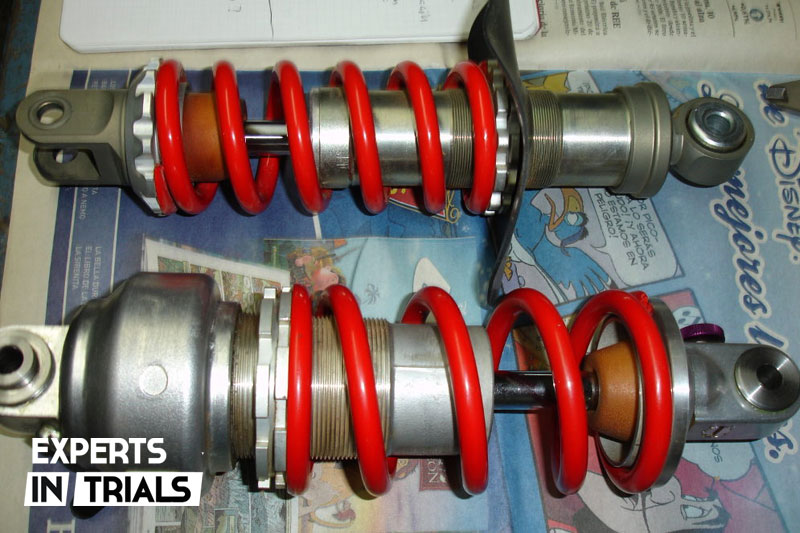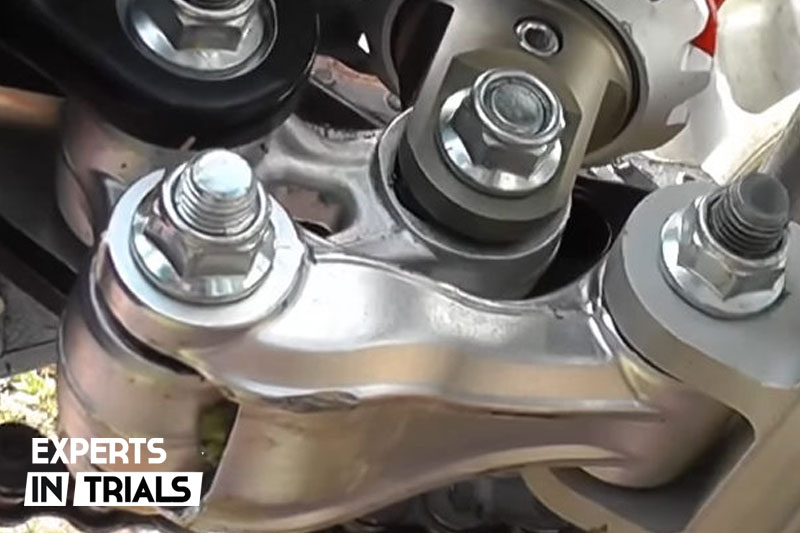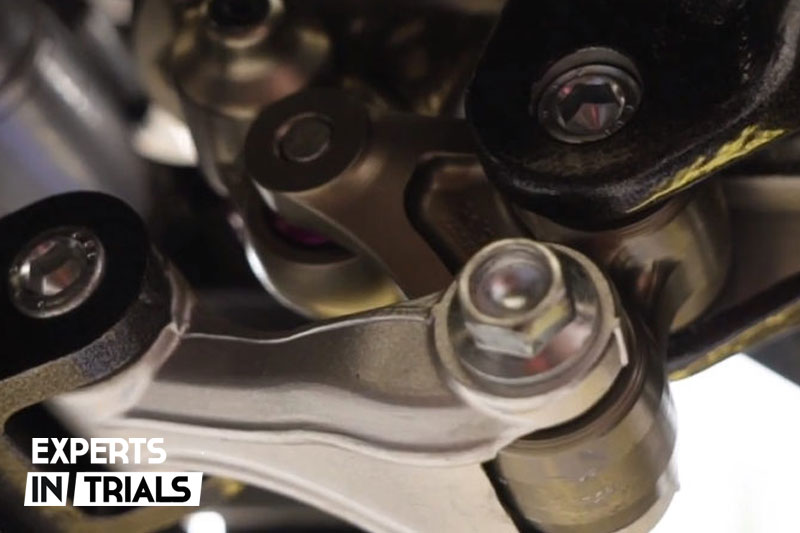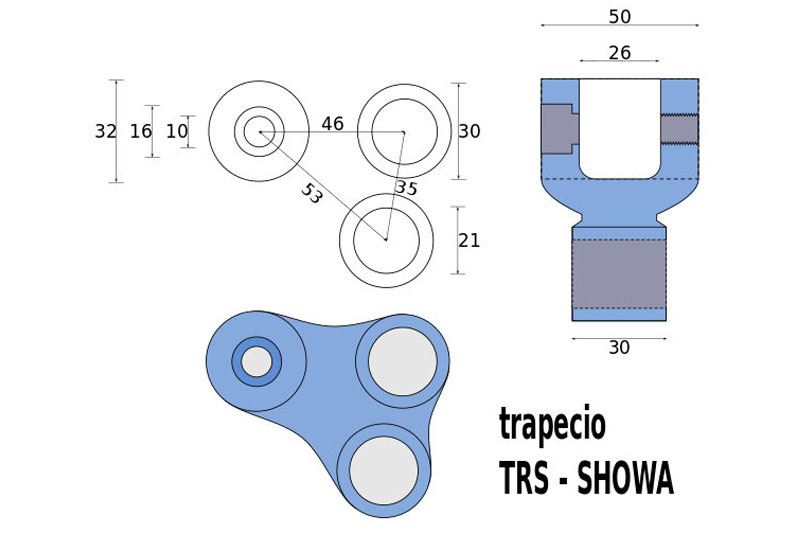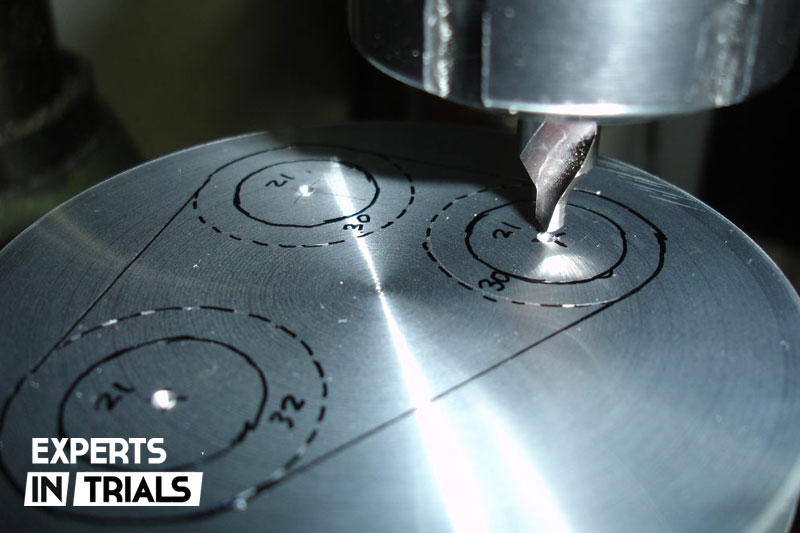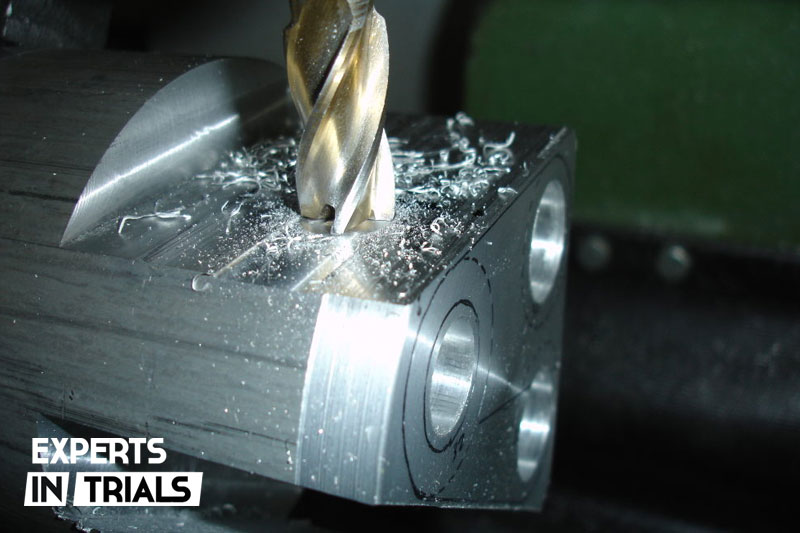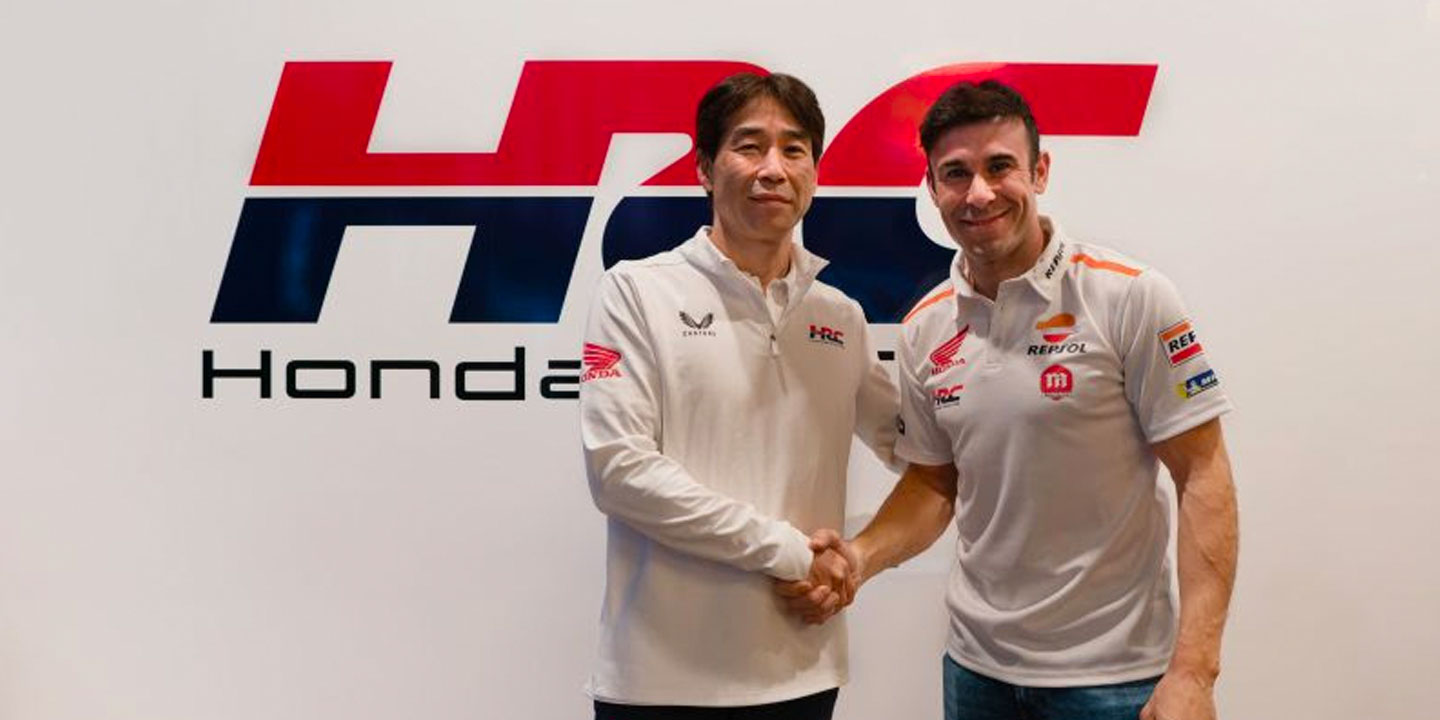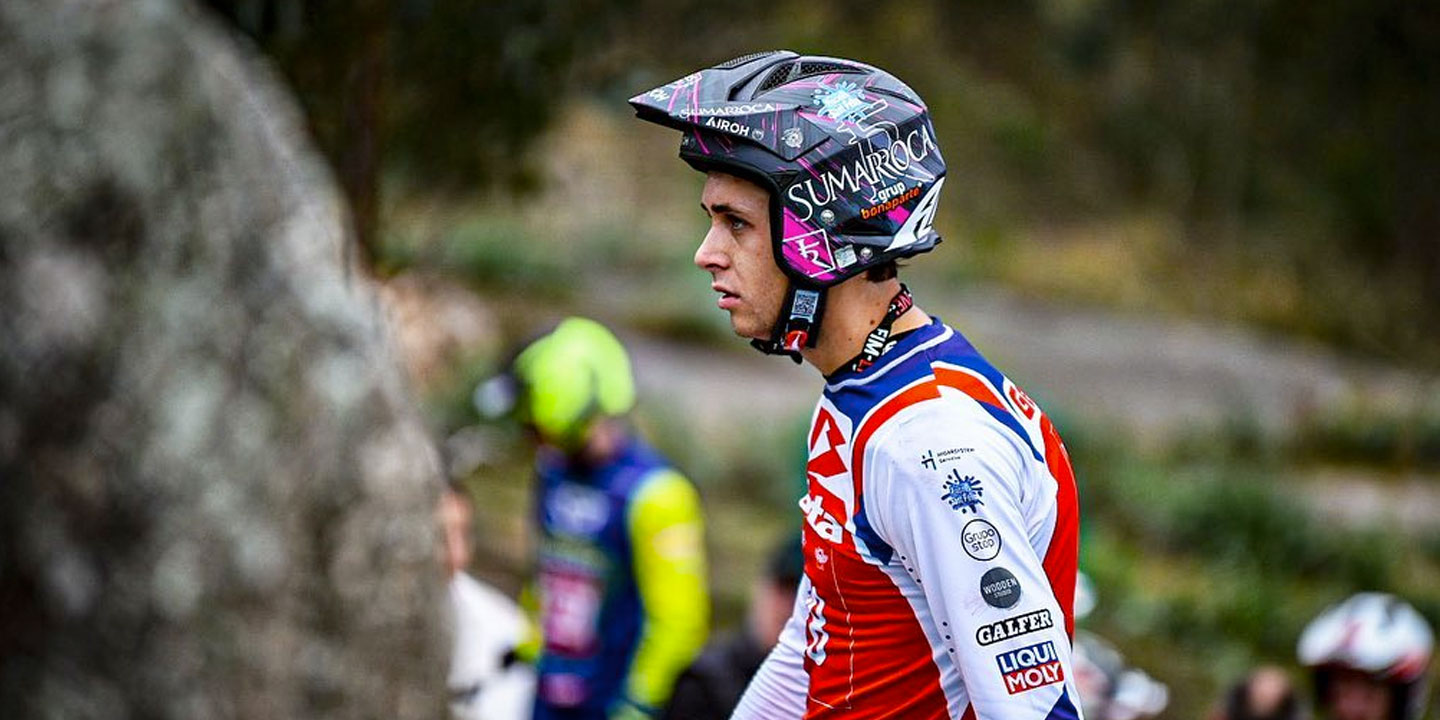“MRS. TRS, LET ME INTRODUCE YOU TO MR. SHOWA”
If you have it handy, play the “Out of Africa” soundtrack and remember when Meryl Streep met Robert Redford. It is indisputable that they are made for each other, however, they have to have a hard time to be together. In much the same way, when you understand the logic of the
TRS
–a bike that can be defined as the hybrid daughter of a
Montesa Cota 315R
and a Gas Gas TXT– you can’t help but think about how good a Showa shock would be! As in the movie, it is a relationship that is not diplomatic and out of all protocol, but almost as beautiful and intense. And that’s what it’s all about.
IN CONTEXT
The TRS “One” comes with an Ollé shock absorber for the same reason Meryl Streep married Baron Devidé: out of sheer obligation. It is logical to try to maintain the price contained in the basic motorcycle; It’s a common strategy across almost all factories and disciplines. In some cases, it’s a balance that benefits the average rider, who saves a few bucks by not paying for things they don’t need (e.g. GG racing vs. GP). In the case of TRS, this is not the case. The thousand euros that separate the “one” from the RR are well worth the rear shock.
The Ollé is a decent shock absorber, for example, for a 2003 Sherco (in fact, it’s practically the same as the one on that one, only now with a steel body and a hydraulic adjustment system) but it’s not up to par with the rest of the bike.
The problem is that it only works well under strong loads, being very insensitive to small variations in load. If a little bit of hydraulic and spring is released, it bounces off the steps; If you slow down a bit, then you feel every little stone in your spine. Despite the “quasi-pro-link” system, it is not very progressive at different compression speeds: when you need a quick but slight sinking, its behavior is excessively rigid if you fix the hydraulics so that it does not rebound under strong compressions.
It is not surprising, then, that the
TRRS RR
is more attractive than the “one” (it may even sell more). The RR comes with the Reiger, the new heartthrob of trial, which combines efficiency and smoothness at the cost of a high rate. It is a mandatory price for the improvement of the standard bike and, due to the peculiar shape of the linkage system, there is little to choose from: the Reiger 3-way (high-speed compression, low-speed compression and extension, at the limit of one thousand euros) or the 3-way with hydraulic stop (the one mounted by the Gold which, with the special trapeze it needs, goes almost to 1400). You can also find a Öhlins with simple regulation for around 730 euros. Wow, as good as these modern heartthrobs are, it’s a lot of fabric for my film.
So I got my hands on the “Robert Redford” of trial shocks, a mature heartthrob but with a lot of boards, seasoned in a thousand trials and educated in the old way, less modern but more reliable and consistent in the long run: the Showa of the 315R/4RT elevation. Given the solidity and ultimately ease of repair of this shock, second-hand is a very good option as you can find units in good condition for less than half the cheaper Reiger; The new one is priced between the cheap Öhlins and the Reiger, even so, it is worth it for the larger diameter of its piston.
A careful walk through the paddock shows that almost all factory bikes have larger caliber shock absorbers. In the photos you can see, for example, that both the shock absorber used by Raga and the Busto shock absorber are considerably larger in diameter than the standard one, even than the Reiger of the RR or the Öhlins (32 – 36 mm, respectively).
This has an indisputable mechanical explanation: the larger the piston area, the greater the amount of oil that moves before the same rod stroke and, therefore, the greater the action on the reed cartridge, directly increasing its sensitivity. As side effects, not insignificant, less increase in temperature with operation and less change in pressure in the lung/gas cushion, which translates into a much more homogeneous behavior and, above all, longer life of the shock absorber. In this sense, the Showa with its 40 mm piston stroke is unbeatable and, apart from the excellent materials and workmanship of its Japanese cradle, this is probably where much of its appreciated trial behavior resides.
In this case, it’s a Showa that I bought to replace, what a coincidence! the Ollé of my 4RT 2014. When I sold it, of course, it went with the standard one and I wrapped the Showa carefully in a cloth, hoping that I would be able to assemble it in the future… And that future came!
Comment: The Ollé above and the Showa below. The perspective of the photo adds to the feeling of a Japanese big guy, although both measure practically the same between axes (265 mm). The similarity between the two ends here: the Ollé uses the typical De Carbon system with a gas chamber separated by a secondary piston, using the same tube as the main piston; The Showa separates the gas from the oil by means of a rubber membrane concentric to the shock absorber shaft, so that the gas remains in the protrusion where we see the inflation valve.
For the handyman, the Showa is much nicer and easier to work with. The foil cartridge of the Ollé is 36 mm in diameter compared to 40 mm in diameter in the Showa. The body of the Ollé is made of steel while the Showa is cast and machined from aluminium so, despite being bulkier, it weighs only a little more than the Ollé (about 200 g).
R16V vs SHOWA
At first glance, the progressive system of TRS is a bit puzzling instead of the typical pair of linkages that surround a trapezoid formed by two triangles in whose upper apex the ball joint of the shock fits, in TRS they have cast a triangle that fits into three U’s: in the swingarm, in a single Y-shaped linkage and, here’s the difficulty, at the lower terminal of the damper, which is also U-shaped.
In principle, this system does not have any dynamic advantage over the traditional one, but it is true that it is more collected and has much better access. The problem that arises when trying to attach a shock absorber from another cradle is precisely the lower U-terminal.
There were two options: to machine a new terminal for the Showa (an option followed in the Reiger of the RR and the Öhlins) or to machine a new triangle similar to that of the “Gold”.
If the Showa had been second-hand, it probably would have gone the first way after completely disassembling it for a rework; However, since it was practically released, I decided on the second one. I had already machined a trapezoid years ago for my Sherco Marlintec, plus I could also try other shocks without much trouble. Decided.
LET’S GET TO WORK
With the original triangle on the bench (which, by the way, had the ball joint wrongly installed) I took out the measurements and designed my own trapezoid for the Showa and put a duralumin billet in the milling machine.
After a few hours and fifteen hundred interruptions, the trapeze appeared over the notebook.
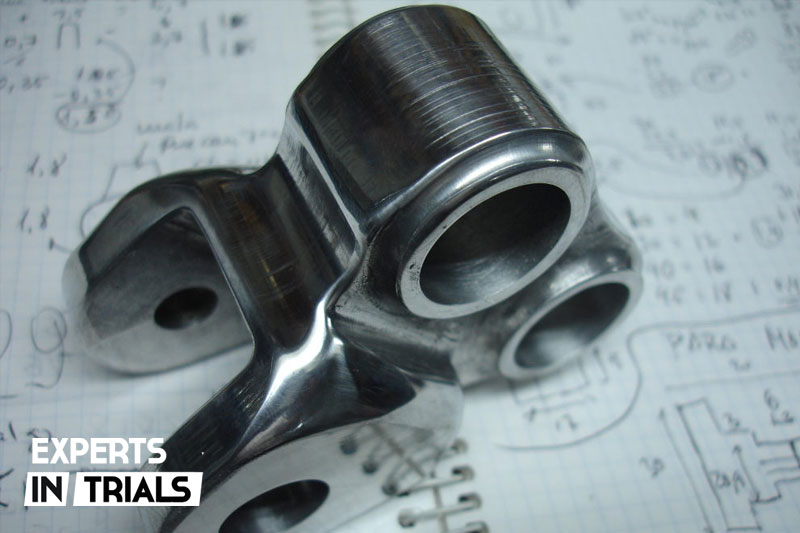
Without stopping to clean Mrs. TRS a bit before the photos, I was pleased to see that everything clicked into place, although I had to turn the bushings for the ends of the shock because the original honda ones are too wide. No sooner said than done.
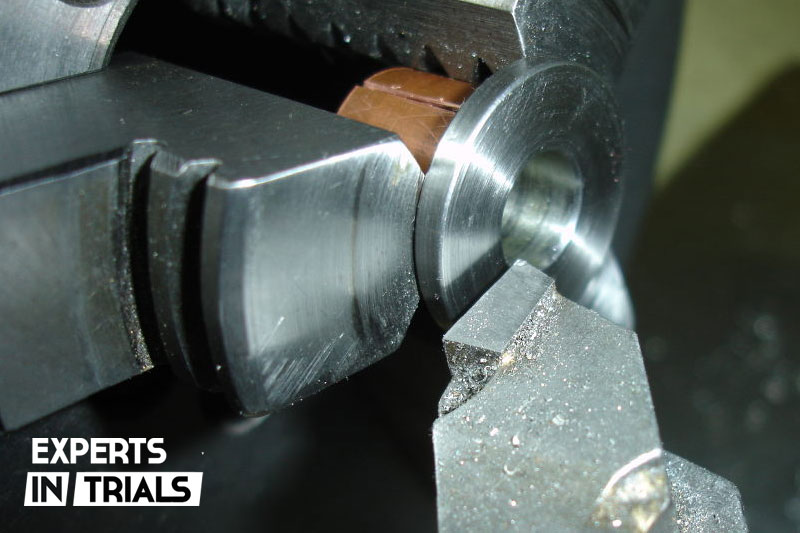
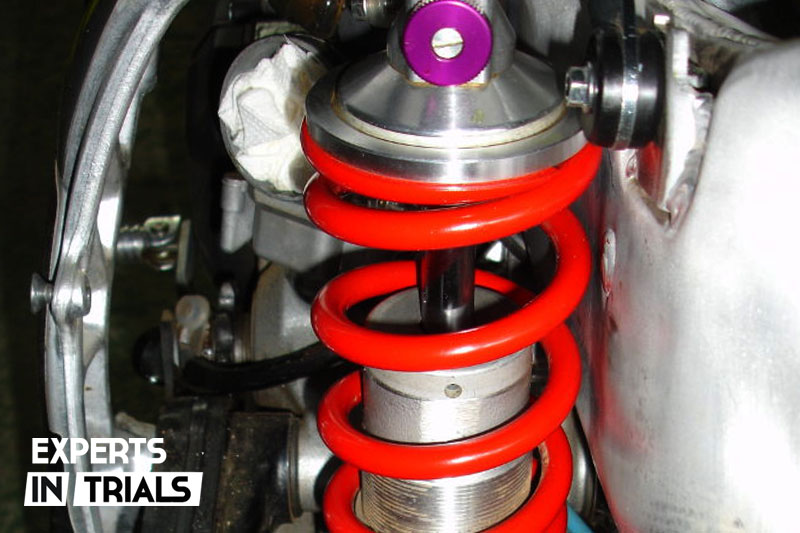
After looking for a decent screw (M10 12.9) and fitting the needle and cap bearings into the new wishbone, I assemble everything, tighten neither too much nor too little and voila!
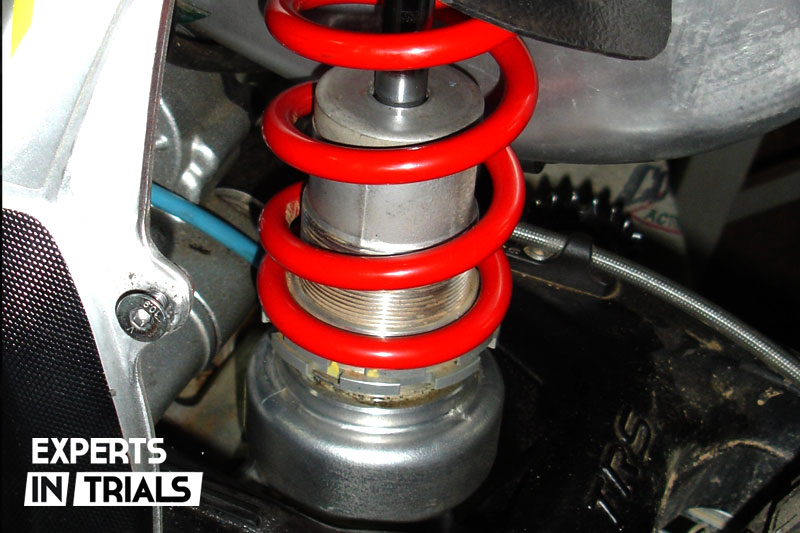
Although everything imaginable is always measured and tested, silly details always emerge. Luckily this time it was only one: due to the larger diameter of the Showa’s top ring, the oil condensation glass (an unlikely detail on a non-Honda trial bike) was in the way. There is no evil that does not come for good, I took the opportunity to change the route and machine in nylon a mini glass in front and with the exit oblique, to alleviate the occasional spit of oil. An old camera to cut out the top rubber protector and close the details.
SET-UP
To mount someone else’s shock absorber and expect everything to be perfect the first time is to be delusional. As the Showa is done, the response in the TRS was considerably slow and harsh. This is not surprising given that it is designed for a bike almost 10 kilos heavier, so you have to loosen the spring by 2 to 3 mm. So, then, the hydraulics become the master and take away the joy of the extension. No problem: loosen the purple wheel almost to the max. After several hours and several test sessions (in my hands and in those of colleagues) yesterday Saturday I was completely satisfied with the device.
I think that’s what Miss Blixen said to Mr. Hutton.
A report by Marlintec
